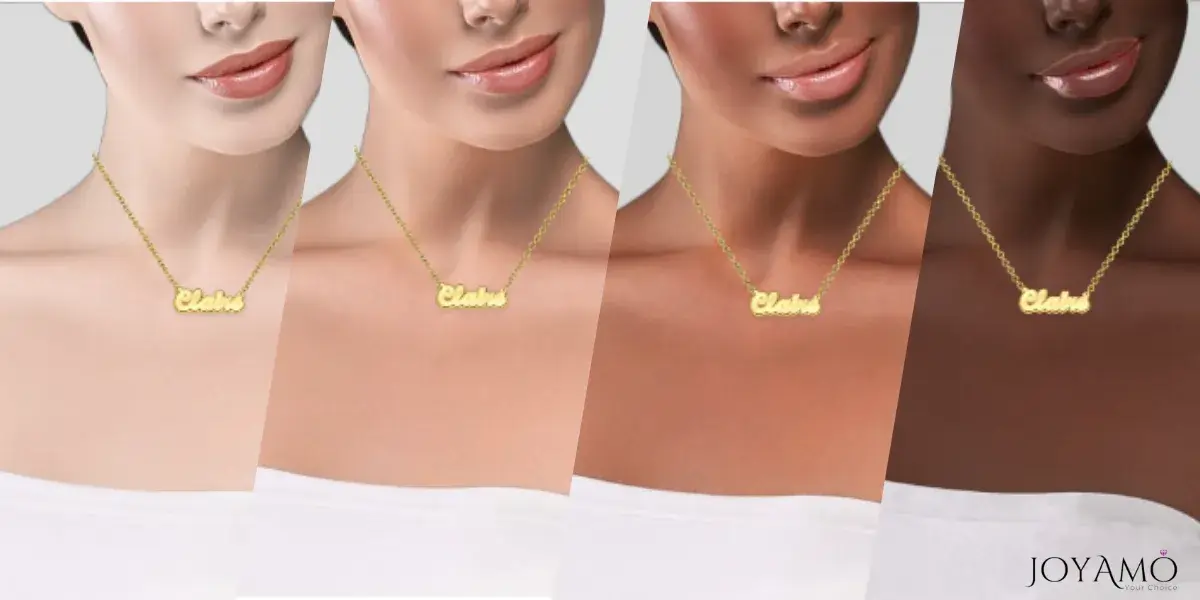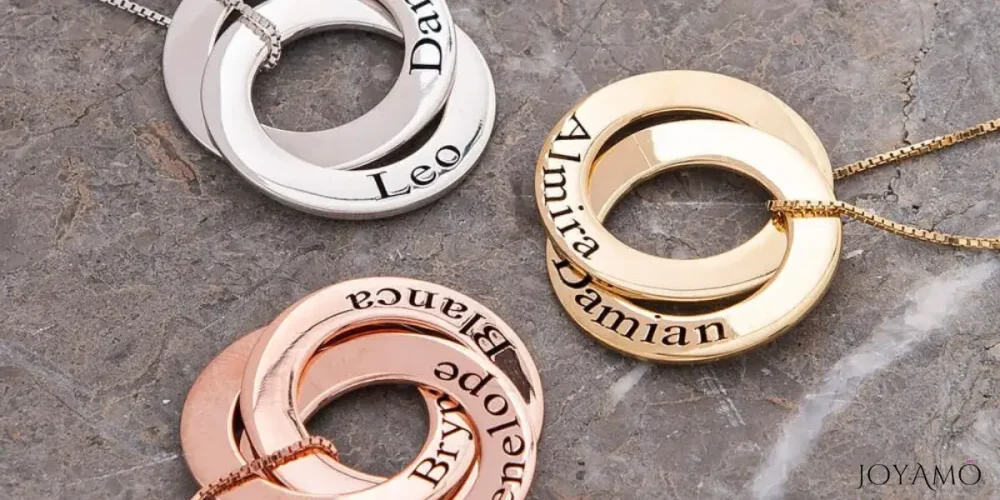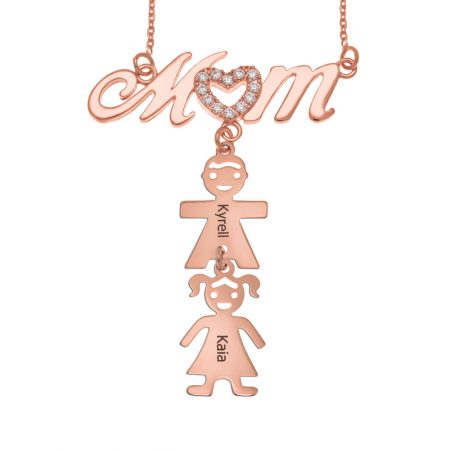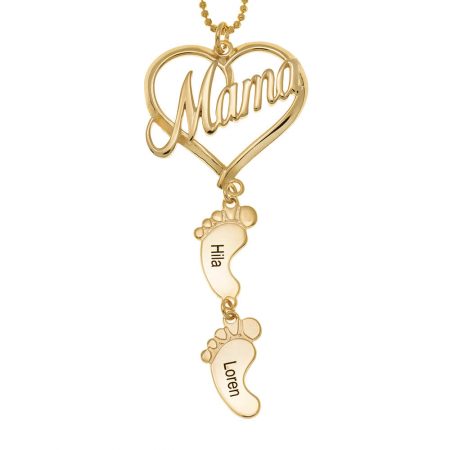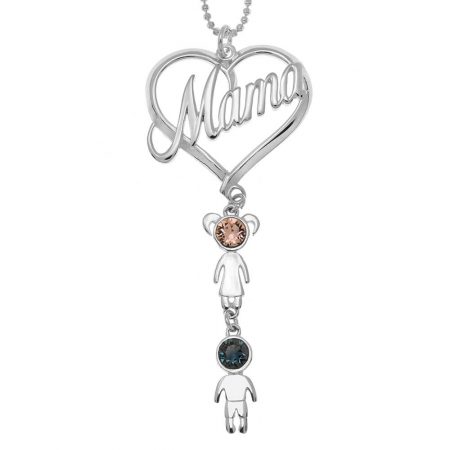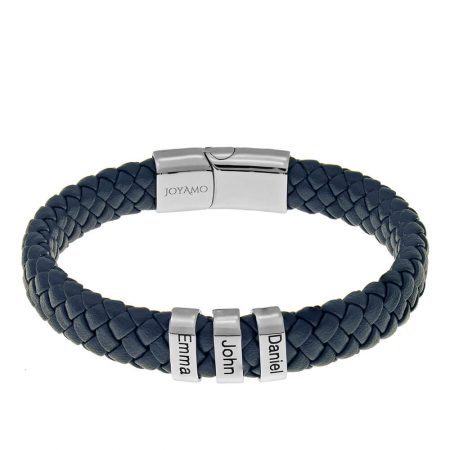Jewelry colors play a pivotal role in enhancing an outfit and expressing personal style.
It can be a vibrant birthstone necklace, a pair of zirconia earrings, or a personalized bracelet.
The colors of our jewelry can significantly impact our overall look and mood.
1.- Introduction to Jewelry Colors
The colors of the jewelry you choose to wear can elevate your style and also have an important psychological impact.
Enhancing Outfits
- Jewelry colors can add depth, dimension, and visual interest to any outfit, transforming a simple look into a sophisticated statement.
- A pop of color from a vibrant birthstone or a touch of shine from gold plating or sterling silver jewelry can instantly elevate the look and make it more memorable.
- By strategically selecting jewelry colors that complement your clothing, you can create a cohesive and harmonious appearance that ties the entire outfit together.
Expressing Personal Style
- Your choice of jewelry colors can serve as a reflection of your personality, taste, and individuality.
- You can gravitate towards bold, statement-making pieces or prefer understated and classic elegance, the colors of your jewelry allow you to express your unique style preferences and aesthetic sensibilities.
- Experimenting with different jewelry colors enables you to explore and evolve your style, adding versatility and creativity to your wardrobe.
Psychological Impact of Colors
- Colors have a profound psychological impact on our emotions, moods, and perceptions.
- Warm tones like red, orange, and yellow are often associated with energy, passion, and warmth, while cool tones like blue and green evoke calmness, tranquility, and serenity.
- The choice of jewelry colors can influence how we feel and how others perceive us, making it important to select colors that resonate with our mood, intentions, and the message we want to convey.
Jewelry colors are not just decorative accents; they are powerful tools for enhancing style, expressing personality, and influencing emotions.
The impact of color of the jewelry pieces you choose has the power to create captivating looks that reflect your unique identity and leave a lasting impression.
From Sterling Silver circle necklaces with disc pendants to rose gold plating bracelets with names, the color of your jewelry reflects your fashion style and your personality.
2.- Understanding Color Theory
The color theory provides valuable insights into how different colors interact and harmonize with each other, making it a crucial aspect of selecting jewelry that complements your style and preferences.
Here’s an overview of the basic color theory principles and how they influence jewelry choices:
Basic Color Theory Principles
- Colors that complement each other: complementary colors are pairs of colors positioned opposite each other on the color wheel, like red and green or blue and orange. When combined, complementary colors produce contrast and vibrancy, making them visually appealing. In the world of jewelry, pairing colors can bring excitement and flair to your look. Combinations can add interest and drama to your look.
- Harmonious hues: analogous colors consist of colors that sit next to each other on the color wheel, such as red, orange, and yellow. Analogous color schemes promote a feeling of unity and coherence, making them ideal for creating coordinated jewelry sets. By opting for jewelry pieces in different hues, you can achieve a harmonious appearance.
- Single-color elegance: monochromatic color schemes revolve around utilizing shades of a color, like various tones of blue or green. Jewelry designs are based on monochromatic themes of sophistication and grace, allowing for variations in shade and intensity. This style is perfect for crafting impactful jewelry ensembles.
Color Temperature Influence
- Cool Colors: People often classify colors as either warm or cool, depending on their underlying tones. Warm hues, like reds, oranges, and yellows, tend to evoke feelings of liveliness, comfort, and vigor. On the other hand, cool shades such as blues, greens, and purples often bring about a sense of peace, tranquility, and relaxation. Having an understanding of color temperatures can assist you in selecting jewelry that complements your skin tone and personal preferences.
- Impact on Jewelry Selections: The warmth or coolness of jewelry can influence how it looks overall and how well it goes with your attire and skin tone. For instance, gold jewelry with undertones might accentuate the warmth of your skin tone, whereas silver jewelry with undertones could complement clothing in cooler tones. By taking into account the color temperature of jewelry pieces, you can make decisions that elevate your fashion sense and enhance your features.
If you follow the basic color theory principles and the influence of color temperature on the jewelry you wear, you can make confident and harmonious jewelry choices.
If you’re experimenting with complementary contrasts or opting for subtle monochromatic elegance, incorporating color theory into your jewelry selection process allows you to create captivating and cohesive looks that reflect your style and aesthetic sensibilities.

3.- Choosing Jewelry Colors for Skin Tone
Selecting jewelry colors that complement your skin tone is essential for creating harmonious and flattering looks.
Getting to know your skin undertones—whether warm, cool, or neutral—can guide your jewelry color selection process.
Here are some tips and recommendations to help you choose the perfect jewelry color for your skin tone:
Determining Skin Undertones
- Warm Undertones: If your skin has undertones, you might notice a hint of yellow, peach, or gold in your complexion. Your veins may have a tint. People with undertones usually tan easily. Look great in warm colors like red, oranges, and yellow.
- Cool Undertones: For those with undertones, their skin may show shades of pink, blue, or purple. Veins might appear bluish or purplish. Please take into account that cool-toned individuals tend to tan more.
- Neutral Undertones: Individuals with undertones often display a blend of cool tones in their skin. Their veins may seem to be both green and blue. Those with undertones have the advantage of being able to wear a variety of colors. You can pull off both warm and cool tones effortlessly.
Jewelry Colors for Different Skin Tones
- Warm Undertones: People with warm undertones tend to shine in jewelry featuring earthy shades. Gold jewelry can enhance their glow, making their skin look radiant. Opt for gold-plated necklaces, bracelets, and earrings in tones to highlight your complexion.
- Cool Undertones: For those with cool undertones, silver jewelry with metallic shades can be a perfect match. Sterling silver pieces in gold, platinum, and sterling silver hues can add brightness to your skin tone. Create a lovely contrast.
- Neutral Undertones: Individuals with undertones have the freedom to wear both gold and silver tones. Experiment, with mixed metal jewelry. Choose pieces adorned with birthstones and cubic zirconia that suit your style and outfits.
You can enhance your natural beauty and create balanced and flattering looks using the correct jewelry color that naturally matches your skin’s undertone.
If you prefer the warmth of gold or the coolness of silver, selecting the right jewelry colors for your skin tone allows you to showcase your style with confidence and elegance.
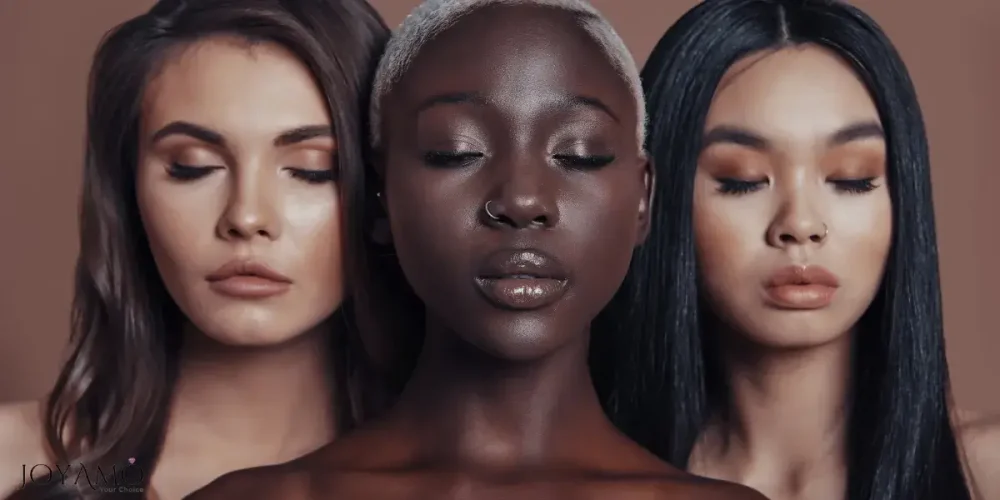
SKIN UNDERTONE CHART
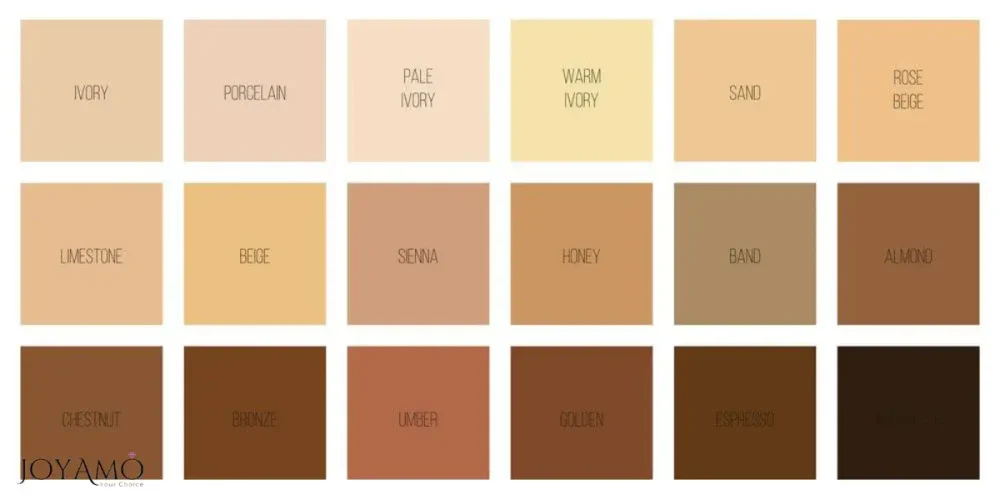
Skin Undertone Chart, an explanation
A chart for skin undertones is an aid used to recognize and classify the tones underlying an individual’s skin. Unlike skin tone, which refers to the color of the skin, undertones are the delicate hues beneath that affect how colors look against the skin.
Understanding your skin undertones is crucial for choosing clothing, makeup, and jewelry colors that complement and enhance your complexion.
Typically, a skin undertones chart sorts undertones into three groups; cool and neutral. Warm undertones include peach or gold hints, while cool undertones may show pink-red shades. Neutral undertones have a blend of cool tones.
Skin undertone charts often rely on indicators like vein color, jewelry choices, and sun exposure reactions to identify one’s undertones. For instance, individuals with undertones usually have veins visible under their skin, whereas those with cool tones tend to have bluish or purplish veins.
By consulting a skin undertone chart, people can discover their tones. Make educated decisions when picking colors, for clothing items or makeup to accentuate their natural beauty and achieve cohesive looks.
| Undertone Type | Characteristics | Vein Color | Jewelry Preference | Best Metal Choices |
|---|---|---|---|---|
| Warm | Hints of yellow, peach, or gold | Greenish | Gold | Gold |
| Cool | Shades of pink, blue, or red | Bluish or purplish | Silver | Silver |
| Neutral | Balanced mix of warm and cool | Mixed | Flexible | Both gold and silver |
4.- Selecting Jewelry Colors for Outfits
Matching jewelry colors with your clothing is essential for achieving cohesive and polished looks.
If you learn how to complement your outfit colors with your jewelry choices, you can create harmonious looks that enhance your overall style.
Here are some tips on selecting jewelry colors for your outfits:
Coordinating Jewelry with Clothing Colors
- Consider the Color Wheel: When choosing jewelry to accessorize your outfit, you can refer to the color wheel for inspiration. Pairing clothing, like reds or oranges, with gold or bronze jewelry creates a harmonious look. On the other hand, colored clothing such as blues or greens goes well with silver or white gold jewelry.
- Match or Contrast: Decide if you want your jewelry to match or contrast with your outfit. Matching colors create an appearance while contrasting colors can add flair and depth to your look.
- Neutral Colors: Neutral-colored outfits like white or gray offer flexibility when it comes to jewelry choices. Experiment, with both cool-toned pieces to find the perfect complement for your neutral attire effortlessly.
Incorporating Jewelry Colors with Patterns and Textures
- Subtle Accents: If your outfit features bold patterns or textures, opt for understated jewelry colors that complement rather than compete with the outfit. Choose jewelry in metallic tones like gold or silver to add subtle accents without overwhelming the overall look.
- Color Harmony: Select jewelry colors that harmonize with the dominant colors in your outfit’s patterns or textures. For example, if your outfit features a floral print with hints of pink and green, choose jewelry with similar color tones to maintain harmony and balance.
- Texture Play: Experiment with mixing different textures in both your clothing and jewelry. Pair textured clothing, such as tweed or knit, with textured jewelry, like hammered metal or beaded designs, for a cohesive and visually interesting ensemble.
Consider Fabric Types
- Formal vs. Casual: Tailor your jewelry choices to the formality of your outfit. Delicate and elegant jewelry styles, such as dainty necklaces or stud earrings, are suitable for formal occasions, while chunky or statement jewelry pieces add flair to casual outfits.
- Fabric Compatibility: Consider the fabric type of your clothing when selecting jewelry. Lightweight fabrics like silk or chiffon pair well with delicate jewelry, while heavier fabrics like wool or denim can handle more substantial and eye-catching jewelry pieces.
We encourage you to follow these tips for coordinating jewelry colors with your outfits, so you can create matching and stylish looks that reflect your taste and elevate your overall ensemble.
Experiment with different color combinations, textures, and styles to discover unique and flattering jewelry pairings for every season and event.
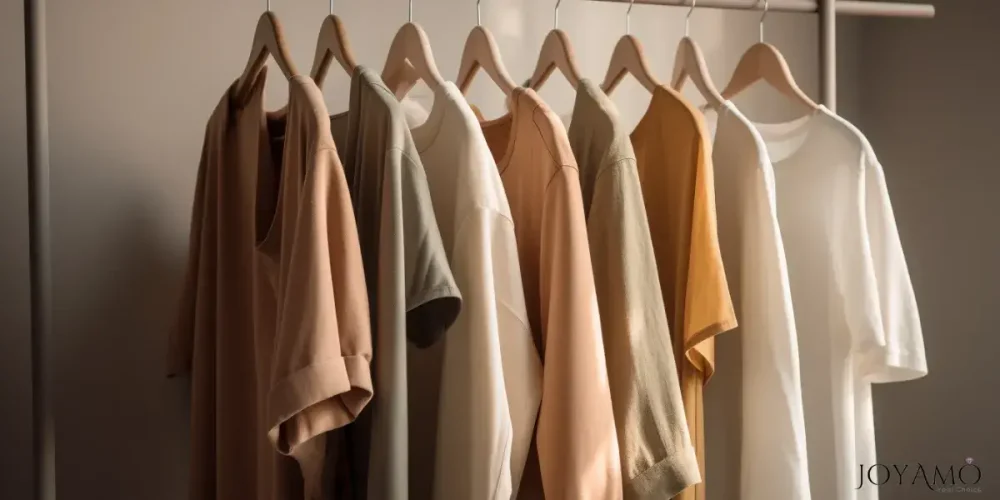
5.- Matching Jewelry Colors to Occasions
Choosing the right jewelry colors for different occasions is crucial for creating appropriate and polished looks. If you’re attending a casual outing or a formal event, your jewelry should complement the occasion and enhance your overall ensemble.
Here’s advice on selecting jewelry colors for various occasions and versatile options that transition seamlessly between day and evening wear:
Selecting Jewelry Colors for Various Occasions
- Casual Outings: For casual outings such as brunch, a birthday celebration with friends, or a weekend shopping trip, opt for jewelry colors that are relaxed and versatile. Neutral tones like gold, silver, or rose gold are excellent choices, as they pair effortlessly with a wide range of casual outfits.
- Work or Professional Settings: In work or professional meetings, choose jewelry colors that are understated yet elegant and classy. Stick to classic metallic tones like gold or silver, or opt for subtle gemstone accents in muted hues. Avoid overly bold or flashy jewelry designs that may distract from your professional appearance.
- Formal Events: Formal events call for jewelry colors that exude sophistication and glamour. Consider statement pieces in rich jewel tones like ruby, sapphire, or emerald for a touch of luxury. Alternatively, opt for classic metallics like gold or silver with intricate designs or sparkling embellishments to elevate your formal attire.
Versatile Jewelry Colors for Day and Evening Wear
- Neutral Metallics: Neutral metallic tones like gold, silver, and rose gold are incredibly versatile and can transition seamlessly from day to evening wear. Choose jewelry in these classic tones with simple and elegant designs that complement both casual and formal outfits.
- Timeless Gemstones: Timeless gemstones like diamonds, pearls, and black onyx are timeless choices that add sophistication to any ensemble. Whether you’re dressing for a daytime meeting or an evening event, jewelry featuring these versatile gemstones effortlessly elevates your look.
- Monochromatic Accents: Monochromatic jewelry accents in shades of black, white, or gray are chic options for day-to-night wear. Opt for black and white diamond jewelry or sleek silver pieces for a modern and polished aesthetic that transitions seamlessly between occasions.
By selecting jewelry colors appropriate for various occasions and opting for versatile options that transition seamlessly between day and evening wear, you can ensure that your jewelry complements your outfit and enhances your overall style no matter where you go.
Experiment with different colors, textures, styles, and designs to discover the perfect jewelry combinations for every occasion in your life.
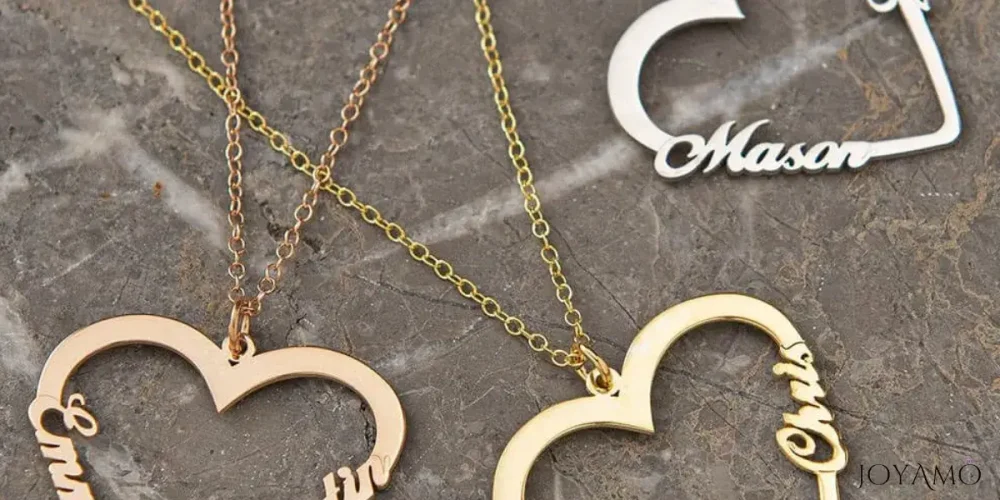
6.- Personalizing Jewelry Color Choices
Your jewelry color choices are not only a reflection of your style but also influenced by your individual preferences, lifestyle, and cultural background.
These factors shape your jewelry color choices, allowing you to create meaningful and personalized jewelry selections.
Factors Influencing Jewelry Color Choices
- Personal Preferences: Your personal preferences significantly determine the colors you choose for your jewelry. Whether you lean towards vibrant shades or prefer subtle and muted tones, your jewelry colors must align, with your style.
- Lifestyle: The colors of your jewelry are influenced by your lifestyle and daily routine. For instance, if you live or work in a hands-on environment, you might opt for jewelry colors that are durable and easy to maintain to withstand everyday use.
- Cultural Influences: Cultural traditions and influences can also play a role, in shaping your jewelry color choices. Certain cultures attach meanings to colors or gemstones, which can impact the colors of jewelry you choose for special events or festivities.
Examples of Personalized Jewelry
- Birthstone Jewelry: Many people love to personalize their jewelry collection with birthstone pieces, adding a touch of meaning. Each birthstone corresponds to a month and carries its unique symbolism. Whether you opt for your birthstone or that of a loved one, wearing birthstone jewelry lets you infuse significance into your accessories.
- Initial Jewelry: Adding a touch to your accessory jewelry, featuring your initials or those of loved ones holds sentimental value. Whether etched onto a charm or ring, initials serve as a sweet reminder of close relationships and cherished memories.
- Meaningful Symbols: Adorning yourself with jewelry that bears symbols or motifs allows you to convey your beliefs, values, and life experiences. Whether it’s an emblem, an expression of love and friendship, or a symbol representing resilience and inner strength, these pieces carry personal meaning that aligns with your sense of self.
Personalizing your jewelry color choices by considering your preferences, lifestyle, and cultural influences allows you to curate a collection of accessories that not only enhance your style but also hold sentimental value and meaning.
Personalized jewelry adds a unique and special touch to your everyday look because you can incorporate birthstones, names, initials, or meaningful symbols that only you can wear.

💡 What Color Jewelry Should I Wear FAQs
✔ How do you know what color jewelry looks best on you?
Figuring out the flattering jewelry color for you involves taking into account your skin undertones. Gold jewelry tends to complement undertones, whereas silver pairs, with cool undertones. It’s about experimenting with hues to discover what enhances your complexion and personal style.
✔ How do I choose jewelry color for my outfit?
When selecting jewelry colors to match your outfit, it’s helpful to refer to the color wheel. Complementary colors create contrast, while analogous colors bring a sense of harmony. You can. Coordinate your jewelry hues with your clothing. Opt for contrasting tones to add visual appeal and balance to your overall look.
✔ What colour jewellery suits skin tones?
The ideal choice of jewelry colors depends on skin tones. Gold pieces tend to complement undertones, while silver accents go well with undertones. Those with undertones have the flexibility to wear both types of metal. It’s about experimenting with shades until you find what complements your skin tone and brings out the best in your appearance.
✔ What color jewelry should I wear gold or silver?
Deciding between gold and silver accessories is a matter of preference, considering factors like choice and skin tone. Gold pieces add warmth and richness when paired with skin tones, while silver accents beautifully complement cooler undertones. Take into account the occasion and your style preferences when choosing between these classic metallic options.
 SHIPPING
SHIPPING
